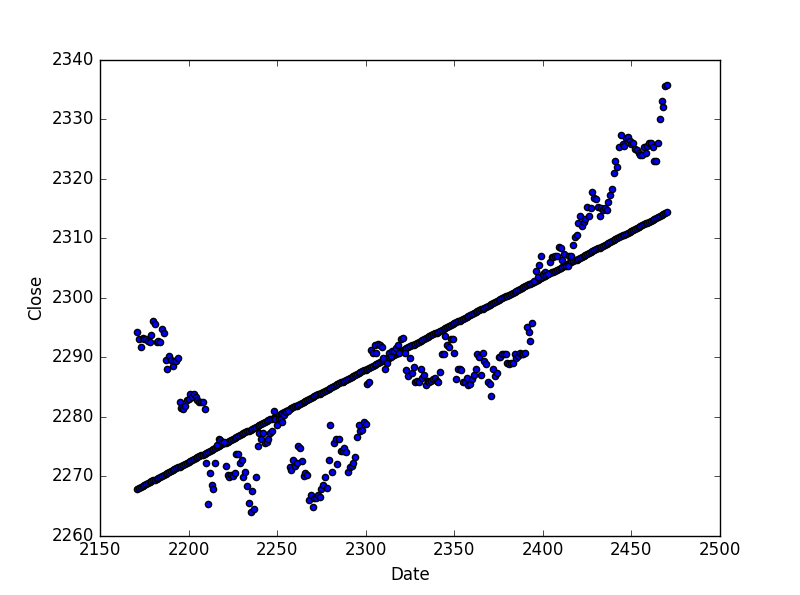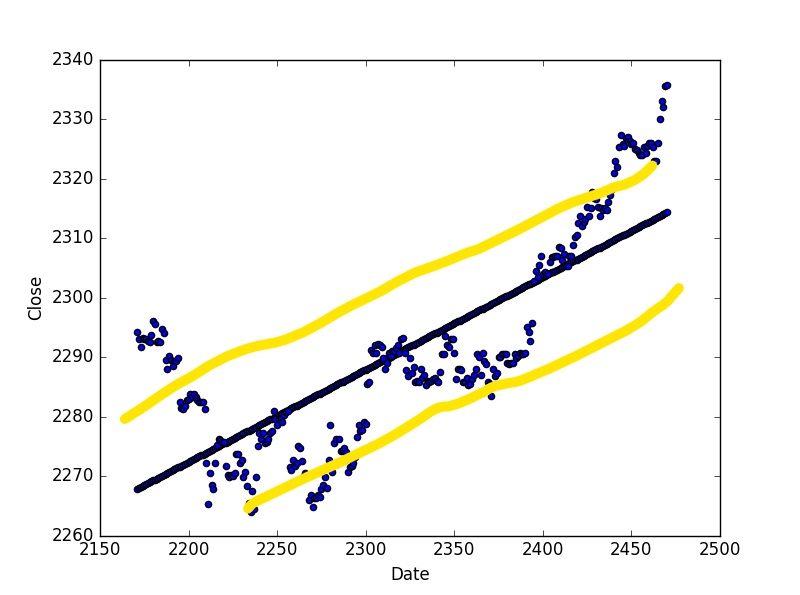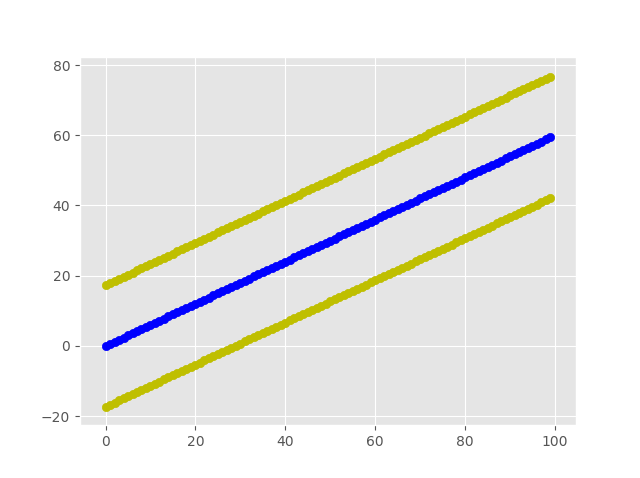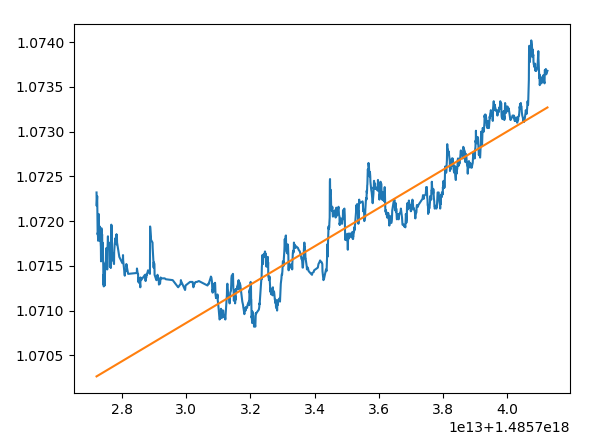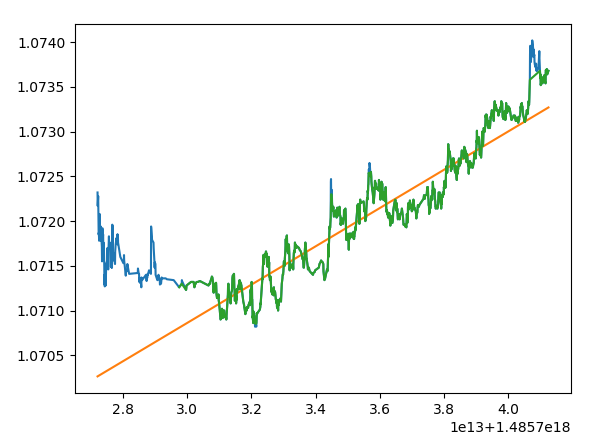I have managed to get a linear regression line for time series data, much thanks to stackoverflow prior. So I have the following plots/line drawn over from python:
I got this regression line with the following code, originally importing price/time series data from a csv file:
f4 = open('C:\Users\cost9\OneDrive\Documents\PYTHON\TEST-ASSURANCE FILES\LINEAR REGRESSION MULTI TREND IDENTIFICATION\ES_1H.CSV')
ES_1H = pd.read_csv(f4)
ES_1H.rename(columns={'Date/Time': 'Date'}, inplace=True)
ES_1H['Date'] = ES_1H['Date'].reset_index()
ES_1H.Date.values.astype('M8[D]')
ES_1H_Last_300_Periods = ES_1H[-300:]
x = ES_1H_Last_300_Periods['Date']
y = ES_1H_Last_300_Periods['Close']
x = sm.add_constant(x)
ES_1H_LR = pd.ols(y = ES_1H_Last_300_Periods['Close'], x = ES_1H_Last_300_Periods['Date'])
plt.scatter(y = ES_1H_LR.y_fitted.values, x = ES_1H_Last_300_Periods['Date'])
What I'm looking for is to be able to plot/identify 1 standard deviation from the regression line (shown in the picture above). Most of the above code is just to conform the data to successfully be able to plot the regression line - change the Date/Time data so it will work in the ols formula, cut off the data to the last 300 periods and so on. But I am not sure how to grab 1 standard deviation from the line that is drawn via linear regression.
So ideally what I'm looking for would look something like this:
...with the yellow lines being 1 standard deviation away from the regression line. Does anyone know how to get 1 standard deviation from the linear regression line here? For reference, here are the stats for linear regression:
edit: For reference here's what I ended up doing:
plt.scatter(y = ES_1D_LR.y_fitted.values, x = ES_1D_Last_30_Periods['Date'])
plt.scatter(y = ES_1D_Last_30_Periods.Close, x = ES_1D_Last_30_Periods.Date)
plt.scatter(y = ES_1D_LR.y_fitted.values - np.std(ES_1D_LR.y_fitted.values), x = ES_1D_Last_30_Periods.Date)
plt.scatter(y = ES_1D_LR.y_fitted.values + np.std(ES_1D_LR.y_fitted.values), x = ES_1D_Last_30_Periods.Date)
plt.show()

